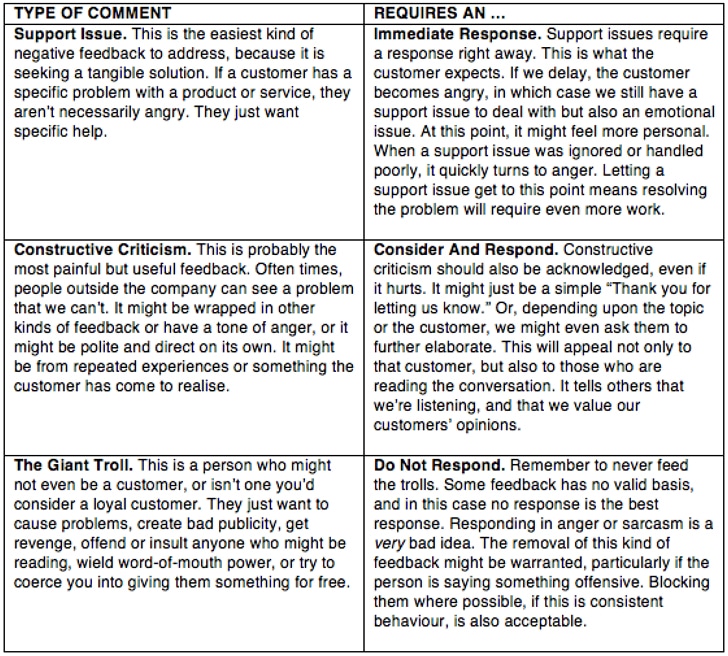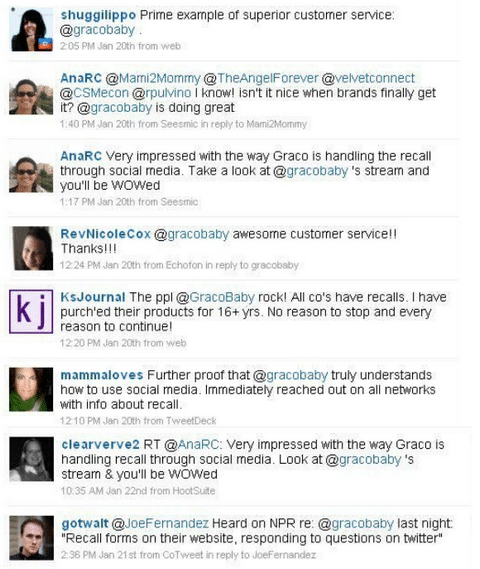Managing negative feedback on social media
International education is one of the industry sectors most heavily dependent on, and enabled by, social media and the Internet. It can’t help but be, given that prospective study abroad students most often live far away from the institutions they’re interested in attending. Therefore, students – especially those who cannot manage a campus visit before applying – look to institutions’ websites and social media platforms for evidence about how good, or ill-suited, a school likely would be for them. The catch with social media is, well, it’s social. It’s a forum for conversation, not one-way promotion. This is largely why it’s so powerful: when people like a brand, they say so very publicly, to their friends and followers who may then share the positive impressions still more widely. But of course the reverse is true as well: negative feedback was never so damaging or visible before social media. This ICEF Monitor article looks at best practices for managing negative feedback posted on websites and/or on social media platforms.
The fear
When we look at the various ways in which brands manage negative comments about them on the web or social media, it’s important to acknowledge that a common fear lies at the heart of every response:
What if the comment convinces our target market to turn away from our brand?
And also, with specific reference to imagining the brand as an education institution:
What if the comment provokes still more comments, and word-of-mouth, and the damage becomes still greater? What if it feeds our potential students right into the hands of another institution?
These fears are natural and valid. There are many brands that have suffered substantial problems because of negative comments that gained momentum. So there is no sense in discounting the fear many institutions have about the potential for negative comments. But there is this reality: every brand active on social media with stiff competition and a sizeable audience faces unfortunate or spiteful criticisms posted for all to see. The issue then becomes more interesting and even productive: how do we manage negative comments in a way that:
- Diminishes their potential for harm;
- De-escalates their momentum (i.e., does not encourage more negativity and does not turn into a brand/commenter battle);
- Positions the brand as confident and able to process such comments calmly;
- Encourages constructive changes to the brand if the comment is valid, and encourages an even more vibrant, engaged social community.
As the social media blog Simply Measured says:
“The tricky part is that your social presence acts as the face of your brand. How do you keep it blemish free? The answer is tough to swallow: you don’t. People will always complain. It’s what you do after the complaint that matters.”
What doesn’t work
We found an excellent example of bad practice in managing negative comments via an article on the website Opportunity Web 2.0. In this case, the brand being forced to respond was Nestle, which had been facing criticism from GreenPeace because its Kit-Kat chocolate bars included palm oil, harvested in rainforest areas native to orangutans and thus argued to be a destructive practice. Visitors to the Nestle Facebook page began complaining, siding with the GreenPeace point of view, and some changed their profile pictures to altered versions of the Nestle logo (e.g., replacing “Kit-Kat” with “Killer.”)
Nestle’s social media managers responded with public reactions like this:
“To repeat: we welcome your comments, but please don’t post using an altered version of any of our logos as your profile pic – they will be deleted.”
At least one commenter then responded that this was a “Big Brotherish” policy, and that social media was about “embracing your market” rather than punishing it. Things unravelled from there, as you can see in the following screen capture from the Nestle Facebook page:

- Emotionally;
- Confrontationally;
- Condescendingly (e.g., the “Oh please …” in the comment thread.)
Cumulatively, the response became much more damaging to the brand than the initial protests against its practices. Now not only was the brand pursuing a manufacturing policy that was objectionable to some vocal critics, it was proving itself to be dismissive and combative with the public. Eventually, the standoff ended with this from the Nestle representative: “This (deleting logos) was one in a series of mistakes for which I would like to apologize. And for being rude. We've stopped deleting posts, and I have stopped being rude." The apology was definitely necessary but it was unfortunate that it had to come to that.
Different types of comments, and motivations, require different handling
TodayMade, a company that helps brands manage their social media accounts, makes a good point that not all negative comments are the same. In fact, someone reporting a problem (e.g., a website error) is not negative but actually helpful, and responding to them quickly makes them feel valued and helps the brand improve.
TodayMade differentiates between the various kinds of problem-based public comments posted on a brand’s social media accounts, and explains what kind of response each deserves. We have quoted their advice below (with minor revisions) and compiled it into what we hope is a helpful table:

Why segmenting types of comments is important
Social media is fast. It often provokes knee-jerk opinions and reactions resulting in conversations that can get heated and emotional very quickly, and often unnecessarily. Each negative comment deserves to be considered carefully – segmented as in the above table – before a response is issued. Nevertheless, whatever kind of comment – or noted support-issue – an institution or agency is faced with, it is generally a good idea to respond in some fashion, and with a generous, solution-based attitude to encourage the best possible resolution. There are caveats, of course:
- Do not respond to trolls, and feel free to block them or remove their comments. But do not mesh valid negative criticism into the realm of trolls! It’s tempting to remove all negative feedback, but such practice is transparent to regular visitors and can really escalate. There are many cases where critics of a brand – but responsible critics with heartfelt and valid points – saw their comments deleted and made a much bigger public fuss about it than would have occurred were their opinions responded to differently.
- Sometimes a response should include a couple of steps: Some people are just ill-tempered or having a bad day. They will post comments in an unhelpful tone; the best thing to do is to respond promptly and simply to their social media comment. For example, the user says, “Your application process is awful! Step into the digital age, why don’t you?” The response here might be to offer a simple apology online (e.g., “We’re sorry you’ve had a bad experience, and we’d like to try to make things better for you.”). Then, follow up with an invitation to a more personal exchange: “Can you please email us with more specifics so we can address your issue more fully?” If the person remains antagonistic, the best route may then be to discontinue the conversation. Continuing it will attract more visibility to a problem that may well not exist, say in a case where the commenter is simply determined to pick a fight. At least you will have tried, and that counts for a lot to the watching public.
- Make sure you have the right information and authority with which to respond: If the complaint is specific, make sure the right staff member or department sees it. For example an explosive comment like, “Your English department is racist and discriminatory to women!” begs top-level institutional input about how to respond.
Be prompt, but also be patient
Promptness is essential on social media, but speed isn’t. Promptness is responding to a problem in a timely manner – not letting it drag on unnecessarily. Speed without time taken for consideration, on the other hand, can be dangerous; it can be an emotional reaction. Andy Sernovitz, writing on Social Media Examiner, offers this advice regarding being prompt but patient enough to issue a considered response: "Hi, my name is ____ and I hear you. We’re looking into it now, and I’ll get back to you as soon as possible. If you have any questions, contact me directly at _____." He notes these two advantages to such an approach:
- "The ranter knows he or she has your attention - there’s much less incentive to keep spreading the anger;
- It makes a real person with real contact info available, so if the person is still angry, you’ve at least specified a place to vent other than online."
Patience may also open the door for the rest of the social community to chime in. For example, Comment A: “I heard that professors aren’t very good in this programme.” Comment B: “They are! At least in my experience. I had an amazing course with …” The first commenter will likely be more convinced by their peer than by anything the institution might say in response. A final note on promptness: Ensure you are regularly monitoring the conversations people are having about your institution or agency on the web and social media (for example, using Google Alerts for your brand name and your keywords) is the first step in being able to respond in good time before a student’s complaint gains too much momentum or anger.
The good news
When you respond well, it can turn into an opportunity. Mr Sernovitz offers this:
“The rule of thumb is that while unhappy customers talk to five people, formerly unhappy customers you win back talk to ten.”
Whenever possible, ask unhappy commenters what you can do to turn the situation around for them, and make it clear that you appreciate their feedback. If it’s a support issue situation (e.g., the Submit button to send in an application didn’t work), post on the comment thread that it’s now been resolved: “Thanks to [commenter]; this has now been fixed and we apologise for any problems this may have caused other users.”
Mr Sernovitz took a screenshot of the social media feed of Graco baby products, which had taken to Twitter to issue a prompt recall of one of its strollers and offer sincere apologies to users:

















